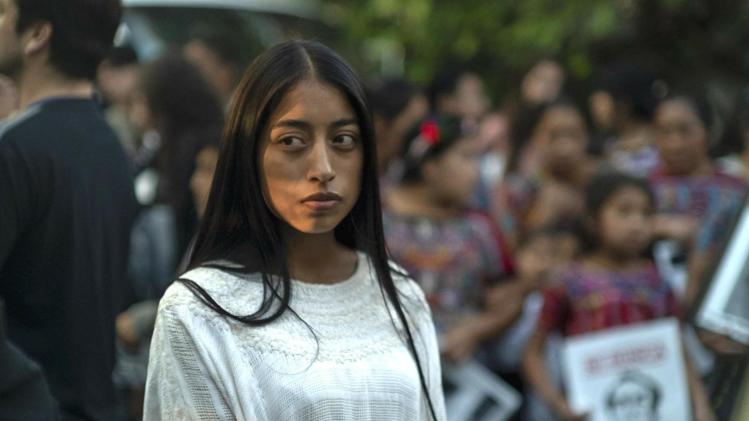
A few weeks ago, when you alluded to our current political nightmare, I was optimistic that the polls would start tilting in President Biden’s favor right after the first debate. I also expected the Supreme Court to rule against Trump’s preposterous claims of immunity. But with the Republican convention approaching, he’s once again in the pages of the New York Times, dictatorial arms spread wide, inciting a red-hatted horde of MAGA thugs to “fight like hell.”
Hell, indeed, is where we seem to be, with little relief in sight from that mendacious orange monster. That’s why it was something of a balm to read Spanish author Ramón del Valle-Inclán’s 1926 dictator novel, Tyrant Banderas. The book was written at the height of the author’s powers; the bearded, bespectacled, one-armed del Valle-Inclán, from an impoverished aristocratic family in rural Galicia, had already become a leading figure in the cafes and theaters of Madrid, writing reams of poetry, plays, and journalism in addition to acting and directing. But for him that was all “fiddle music,” and Tyrant Banderas rightly caused a sensation when it was first published, cementing the author’s reputation (a statue of his wizened figure stands today in Madrid’s Paseo del Prado) and paving the way for a wave of anti-authoritarian works by Latin American authors like Colombia’s Gabriel García Márquez, Paraguay’s Augusto Roa Bastos, Guatemala’s Miguel Ángel Asturias, and Peru’s Mario Vargas Llosa.
It’s also distressingly relevant now, as del Valle-Inclán’s skewering portrait of the skeletal Don Santos Banderas, president of the fictional Santa Fe de Tierra Firme (“he looked like a death’s head in black spectacles and clerical cravat”) holds up a dark mirror to our own carnivalesque country. Mirrors, in fact, are the very foundation of del Valle-Inclán’s peculiar style, which he called esperpento, an untranslatable Spanish term meaning both an ugly, grotesque person or thing as well as a nonsensical or unwise act.
And it’s true: the novel, replete with extremely violent imagery as it narrates an armed rebellion against Banderas’s corrupt regime in deadpan, matter-of-fact prose, is often horrifying. Besides the drunken fights inside the boudoirs of Baby Roach’s “cathouse,” we witness corpses of imprisoned Indigenous revolutionaries and Creole students fed to over-stuffed sharks. There’s also a spectacular act of vengeance involving a pawnshop, a horse, a whip, and a bleeding bag of human remains—one of the darkest scenes in the novel, perversely my favorite.
But del Valle-Inclán’s imagery is just as often beautiful, particularly in its lyrical descriptions of architecture and the natural world. Beyond the jungle foliage of Lake Ticomaipú, its crystal-blue waters plied by canoes and fringed by ferns, Santa Fe’s seaside is a painterly landscape of “sand dunes, agaves, mangroves, prickly pears,” its capital city a cubist composition of tiled cupolas and moonstruck colonnades. The dictator’s sober stronghold, an ex-monastery perched high on a cliff, offers “a geometrical ruin of cactuses and laurels,” while the tent of the boisterous Harris Circus, where the metaphor-slinging lawyer Sanchez Ocaña and the saintly theosophist Don Roque Cepeda preach liberty, equality, and fraternity, “cuts a triangle against the green sky and evening stars.” These twin allusions to geometry are deliberate: “The most beautiful images in a concave mirror are absurd,” del Valle-Inclán wrote. “My aesthetic is to transform classical norms using the mathematics of the concave mirror.”
And that’s just what Tyrant Banderas does from a formal perspective—from many perspectives, I should say. The sprawling narrative, equal parts cynical politicking, picaresque swashbuckling, and esoteric philosophizing, is rigorously contained in seven “parts.” All consist of three “books,” except the fourth, which has seven. Their total sum, twenty-seven, is also the product of three to the third power. Indeed, numbers here are semi-magical, numinous even, as if they hold the key to human fate: “A sacred number sealed the pilgrimage through the clay of human forms,” thinks Don Roque, imprisoned in cell number three. Numerology is dear to his nemesis Banderas, too: time and again the dictator pauses in quiet, serene contemplation of the heavens, taking solace in the reassuringly predictable motion of the stars.
But del Valle-Inclán’s sympathies seem to lie not with such intellectual abstractions or political ideologies—which are always malleable, always subject to blind ambition and the self-serving contortions of language—but with the detached sentiment of the Indigenous vendors and peasant farmers who, like a Greek chorus, comment wryly on the plot and protagonists of the revolution supposedly being fought in their name. Figures at the bottom of the social ladder like Scarface Zac and his chinita or the mystic Lupita bear the brunt of the novel’s suffering, yet they also find ways of surviving, no matter which regime holds power.
Tony, so much more in Tyrant Banderas reminds me of our wayward world: the fecklessness of the diplomatic corps, which merely issues a “Note” urging Banderas to stop executing members of the opposition and observe trade laws, or the obsequious blathering of Banderas’s corpulent ministers, who praise him even though they hate him, offering their allegiance in spite of their revulsion—here’s looking at you, Republicans!
But tell me, Tony, what did you think of Tyrant Banderas? And how does the book compare to Jayro Bustamante’s 2019 horror film, La Llorona, about a Guatemalan dictator tried for brutally massacring Indigenous Mayans?
***
Griffin,
At one point in Tyrant Banderas, a father-daughter musical duo walks through the streets after a performance. “Won’t we ever escape this nightmare?” the father wonders. “Who knows?” the daughter answers. “Never known times as bad as these,” they both agree.
I’m writing this on July 5. On the New York Times homepage, one headline reads, “Biden Tells Governors He Needs More Sleep and Less Work at Night.” Another: “Moped-Riding Thieves Frighten Diners at Upscale NYC Restaurants.” Still another, accompanied by a drawing of a couple sitting in a field watching fireworks in the sky: “Most Men Will Experience Erectile Dysfunction. Here’s What to Do About It.” Not to pull a Ross Douthat on you, but I’m catching the fetid stench of decadence this morning. America feels exhausted; I feel exhausted. Never known times as bad as these, it seems.
Political fiction can remind us that such a mindset is perennial. We’re always imagining the present as a nightmare from which we’re trying and failing to awaken. We’re forever feeling that we’ve finally and fully entered a time of cultural and political exhaustion. Part of what makes Tyrant Banderas such a masterpiece is what it does with this feeling of hopelessness.
Del Valle-Inclán’s stylistic distortions reflect the world more accurately than realism would; maybe Cubist composition is needed when the world is itself fractured. But his esperpento also offers pleasure. You describe the novel as giving multiple perspectives of a sprawling reality. In Peter Bush’s translation, it’s also a dazzling feat of polyvocality. There’s the voice of dark comedy: the sharks are too full to eat any more revolutionaries, for instance. There’s withering portraiture, as with the Spanish Legate, “a threadbare stuffed shirt, a literary snob, a dabbler in decadent salons redolent with the rites and catechisms of French poetasters.” And there’s the occasional, and lovely, lyricism you mention.
More generally, del Valle-Inclán takes pleasure in the texture and tone of language itself. He revels in assonance and consonance, in the linguistic fun that can be found even when describing a horrific world: “Unkempt and uppity, ladies of sin rock back and lap up the hustle-bustle from behind glowing red cigarettes”; “the diaphanous dome of the Harris Circus tent stood out against a green sky glittering with evening stars.” Tyrant Banderas is, in most ways, deeply pessimistic. But the novel’s energy is itself a form of optimism, an affirmation that, though politics is a nightmare and humans are cruel, style and play abide.
In many ways, La Llorona couldn’t be more different from Tyrant Banderas. Where del Valle-Inclán’s novel moves fast, piling up characters and styles in a jittery high-wire act, Bustamante’s film proceeds patiently and dreadfully. The movie opens with the tightly framed face of a white-haired woman as she whispers some kind of repeated prayer: “Take care of us. Protect us. Guide us. Use us.” Over the next two minutes, the camera slowly pulls back and we see that the woman, Carmen, isn’t alone: she’s surrounded by other women, all neatly dressed and lightly complected (“whiteys,” del Valle-Inclán’s novel would call these elites), all chanting the same words. As Bustamante’s shot widens, foreboding music begins to overwhelm their incantations. We think we’re witnessing a scene of private prayer only to realize we’re seeing a communal ritual; we believe we’re in the world of naturalism only to sense that we’re in the realm of horror.
Horror is an effective mode for approaching La Llorona’s subject matter: the genocide perpetrated by the Guatemalan government and army against the native Maya in 1982 and 1983. In the movie, former dictator Enrique Monteverde, played by Julio Díaz, is a confused, paranoid, angry old man. A fictional stand-in for the historical Efraín Ríos Montt, Monteverde is haunted by the past. In an early scene, he wakes in the middle of the night to the sound of a woman weeping somewhere in his large house. He sits up slowly (again, this simple action takes over two minutes), gets a pistol from his closet, and seeks the source of the disturbance. After almost accidentally shooting his wife, Carmen, he shouts, “The guerillas have a spy in the house!”
They don’t, of course. The weeping woman appears to be a specter summoned by the general’s senility and by a more proximate cause: he is currently on trial for the genocide of up to a third of Guatemala’s Ixil Maya population. That’s what Carmen was praying over at the film’s opening, we suspect. “What’s in the past is in the past,” she later says. “If we look back, we will turn into salt statues.” Carmen wants to exonerate the general and, by implication, herself.
There’s a remarkable trial scene fifteen minutes in that mirrors the film’s opening. Again, the camera focuses on a woman’s face—this time, it’s a Maya woman with a traditional veil testifying in court. Again, the camera pulls back, as we see more and more people sitting behind her, not the light-skinned elite but this time the Indigenous, huipil-wearing population seeking justice. The witness recounts the atrocities committed against her and her family. She ends her testimony by lifting her veil and declaring, “I’m not embarrassed to tell you what I went through. I hope you are not embarrassed to do justice.” The paired scenes suggest the film’s interest in communal justice. The general is guilty but so is the society that produced and protected him; this specific woman has suffered but so has her entire people.
After this testimony, the general is found guilty only for the verdict to be quickly overturned. The general and his family wall themselves off in their compound, where a beautiful young Maya woman, Alma, comes to work as a maid. We’re less than a half hour into the movie and any hope for legal justice has been thwarted. With Alma’s arrival, though, supernatural justice seems a possibility. Strange things start happening: Carmen begins having horrible dreams of genocidal violence; frogs inexplicably invade the estate; faces of the disappeared appear outside the windows; Alma, with her long black hair and enormous eyes, is a haunting, largely silent presence. This, Bustamante suggests, is another way to wrestle with political violence: not with anarchic velocity but with patient, creeping dread; not through satire but through horror.
What did you think of the movie, Griffin? Did you find La Llorona a balm as you did Tyrant Banderas? Somehow, I doubt it.
***
Tony,
I did, actually—watching a ghost haunt a frail, stubborn old man for ninety minutes was a breath of fresh air in comparison to the depressing show of congressional Democrats cowering in fear instead of confronting our diminished commander-in-chief.
I’m only half joking: Bustamante’s unsettling portrait of Monteverde’s unraveling offers a brilliant analysis of the psychological paralysis that afflicts those who hold or have held political power—those used to giving orders but who no longer command obedience, whether in the body politic or their own. What happens when you can’t move forward? You cling to the past, though it kills you. Thus Monteverde’s chain smoking, despite his need for a respirator; his stubborn insistence on his innocence and his hollow appeals to the ‘respect’ due to Guatemala, a country increasingly angry at the corruption of the elite white social class to which he belongs; and, of course, his fondness for his gun, which he can no longer operate accurately.
A little like our favorite Argentinian director, Lucrecia Martel, here Bustamante uses the soundtrack to signal the disconnect between Monteverde’s mind and reality. In addition to the eerie supernatural undertones you mention, there’s also the steady drums and lilting flutes played by protestors outside the compound’s walls. Their constant chanting (sin justicia, no hay paz) is threatening, sure, but it’s also melodic, soothing even, a fact highlighted by Monteverde’s granddaughter Sara’s liking for them—and for everything Indigenous, really, including Alma’s long black hair and white huipil, symbols of purity she longs to adopt.
The other recurring sonic device is the one you mentioned: a woman’s bitter wailing, a sound that, at least initially, only Monteverde can hear. The weeping, of course, is the cry of the titular la llorona, a polyvalent figure from central American folklore who is both perpetrator and victim, the giver and taker of life, alternately seductive and terrifying. In the Guatemalan version of the legend, she’s the ghost of a woman who had an affair, then drowned her children to prevent their discovery by her husband; she’s condemned to roam bodies of water in the afterlife, calling out for them (¡Ay, mis hijos!) and killing any living person who sees her face.
Bustamante takes liberties with the tale, and while he never explicitly connects Alma and la llorona, it’s clear she incarnates some version of the ghost. You’re right that Alma barely speaks: “If she’s loud, then she’s far away; if she’s silent, she’s near,” proclaims the elder housekeeper Valeriana, Monteverde’s illegitimate, half-Ixil daughter, stressing another peculiarity of the Guatemalan llorona. To protect the general Valeriana performs a few Mayan rituals, but they fail, as do the medical interventions of Monteverde’s daughter Natalia, a doctor who gradually learns and accepts the painful truth about her father, who in the end (spoiler alert) is savagely strangled to death by his wife Carmen.
Like I said, comforting stuff! But you’re right, Bustamante’s style of horror is actually quite reserved, steadily and insistently building tension rather than relying on gimmicky jumps or cheap thrills. And it’s appropriate, because the full measure of the historical truth—the fact that thousands of Ixil Maya, many of them children, really were brutally murdered by the Guatemalan army in the 1980s—is almost impossible to take in. And yet such horror must be absorbed and digested: truth is the prerequisite of justice and lasting political change.
There’s another ambiguous symbol that Bustamante uses to drive home this point. It’s the one you referred to, Tony: the frogs invading the Monteverde compound. To a Western mind (like Monteverde’s, like ours), an invasion of frogs means only one thing: a plague portending disaster and death, as for Pharaoh in the Book of Exodus. Yet in Maya mythology, choruses of singing frogs (depicted on painted pottery and sculpted flutes and whistles) announce the arrival of the rain god Chaac. For the ancient Maya and their modern Indigenous descendents, frogs, slimy creatures born in and of water, are associated with fertility, abundance, and rebirth. And I think that’s ultimately the view Bustamante wants us to take—that the tragically drowned children of la llorona are also the frog-like heralds of Guatemala’s potential political rebirth, the only ones capable of stitching back together the torn tejido social alluded to during the trial.
It’s true that any attempt at real political reform—in Guatemala and elsewhere—always meets stiff opposition from entrenched interests. Recall that the country’s corrupt court system almost barred the current president, the reformist Bernardo Arévalo, from taking office last year. Here, too, a repeat of January 6 is far from impossible. What I like about Bustamante’s La Llorona is that it doesn’t exactly force us to confront evils for which we bear some guilt, however small. Rather it coaxes or persuades us that it’s salutary—and in our own best interest—to drop our defensiveness and convict ourselves.
Please email comments to [email protected] and join the conversation on our Facebook page.
Previous Story
Remembering Jane McAlevey
Next Story
The Gratitude of Marilynne Robinson


